The changing role of programmatic in Europe, a publisher perspective
By Alison Fennah, Executive Business Advisor at IAB Europe and Thomas Schreiber, Director Publisher Solutions & Innovations EMEA at Google.
In the first six months of 2015, programmatic advertising has been at the centre of discussions across the advertising industry. From Advertising Week in London and Interact in Berlin to the Festival of Creativity in Cannes, it has never been far from the headlines. Indeed, at IAB Europe the small Programmatic Trading Task Force formed in 2014 with a handful of members is now a full Committee with a significant membership across the European market. The Committee aims to increase understanding of the programmatic ecosystem through a series of educational white papers, webinars and articles. Taking a sell-side perspective, the following article outlines the state of the programmatic trading market amongst publishers across Europe and aims to foster confidence in understanding and developing a sell-side strategy.
No longer a remnant channel: Programmatic is proving key to the bottom line
Rather than merely hovering on the periphery, programmatic is becoming more and more core to business. With 33% of desktop display revenues now being traded programmatically (European Programmatic Market Sizing Study, IAB Europe, September 2015), the programmatic market in Europe expanded by 71% in just 12 months to reach €3.65 billion in 2014. Although desktop display still dominates, both mobile display and video are showing explosive growth (240% and 177% year over year, respectively. Programmatic mobile display is now a €550m market opportunity, with over a quarter of mobile display revenues being traded programmatically.
Looking across the board at publishers, 40% are trading one-fifth or more of their digital display ad revenues programmatically (Attitudes towards Programmatic Advertising Survey Report, IAB Europe, August 2015). A smaller proportion have taken things up a notch to conduct most of their trading programmatically – nearly 15% of respondents report more than 61% of their display revenues are coming via programmatic means.
As programmatic adoption strengthens, publishers are starting to rethink their approach. In its recent study The Programmatic Path to Profit for Publishers, The Boston Consulting Group (BCG) found that publishers who outperform the market do so by developing a cross-channel data-driven strategy. According to BCG’s report, “for these publishers programmatic became a key tool for the same types of inventory that are sold directly, especially in more mature markets.” Today, it’s not enough to look at programmatic in isolation; direct and programmatic need to work together.
Programmatic brings clear strategic opportunities
In the coming 12 months, publishers expect even stronger investment in programmatic: the IAB Europe Attitudes towards Programmatic Advertising Report shows that over 80% anticipate that their programmatic revenues will grow by at least 11%, while nearly a quarter expect growth of over 51%. In this context, programmatic is no longer being treated as an add-on operational activity. Instead, companies are increasingly incorporating it into mainstream business procedures. For example, 60% of publishers report on campaigns using the same metrics for programmatic and non-programmatic display, as do 70% of agencies and 62% of advertisers. Looking forward, nearly a quarter of publishers in the study named programmatic as their top priority, while another half recognised it as one of their top-five priority areas (Attitudes towards Programmatic Advertising Survey Report, IAB Europe, August 2015).
This is because publishers are recognising the benefits of programmatic – it delivers clear advantages in operational efficiency and higher returns in order to improve the bottom line. Compared to direct sales, programmatic is seen to be as important and potentially more valuable in delivering higher margins. The majority of respondents cited the desire to maximise media revenues as the main reason for adopting programmatic, followed by operational efficiencies in trading and client demand.
In the more advanced markets, publishers show signs of more mature expectations: two-thirds believe it helps them maximise the value of media. Meanwhile, about half seek to make premium inventory available at scale and believe programmatic can help them increase the value of their inventory. Significantly, more publishers are driven by client demand in advanced and mid-developed markets compared to markets that are new to programmatic, such as Poland, Turkey and Ukraine (Attitudes towards Programmatic Advertising Survey Report, IAB Europe, August 2015).
“The Programmatic Path to Profit for Publishers” – a recent study conducted by BCG and sponsored by Google – recommends that publishers proactively analyse bidding behaviour and leverage the findings in order to segment and match the right inventory with the buyers who value it most to drive higher revenues. “Smart publishers use both dialog and data to build a clear understanding of which buyers prize which inventory and audiences, and they offer advertisers a number of different ways to target the right audiences,” the study reports. “A UK publisher that uses customised programmatic sales of inventory targeting its highest-value audience segments achieves CPMs up to six times those of direct sales.”
Programmatic as a source of competitive advantage
Many publishers are recognising how programmatic provides real competitive advantage, and are bringing these operations in-house. Just over half of publishers trading programmatically reveal that more than 81% of their programmatic revenues are traded in-house. With 33% of publishers now considering bringing programmatic in-house, the competitive gap is only set to widen going forward (Attitudes towards Programmatic Advertising Survey Report, IAB Europe, August 2015).
Publishers cite a host of key reasons for bringing programmatic skills in-house: better monetisation of inventory, more efficient sales and operations processes, better integration of audience data into trading process and the opportunity to implement a more efficient multi-platform advertising strategy.
When we compare advanced markets to less mature ones, the key motivators are distinct. In established regions, integrating audience data into trading processes is the main motivator at 91%. In mid-developed and new-to-programmatic markets, monetisation is the major impetus to bring programmatic in-house at 75%.
Understanding and overcoming barriers to adoption
IAB Europe’s analysis aimed to comprehend the decisions that publishers face in seizing the programmatic opportunity. According survey respondents, leading barriers to programmatic adoption include hiring and training people with the right skill set (57%) and selecting and setting up the right technology (46%).
In advanced markets, two-thirds of respondents cited the right skill set as the main barrier, compared to only 44% in markets where programmatic is relatively new. This reflects a shift in skills as markets mature and programmatic evolves into an analytical science. We’re increasingly hearing about the new era of “math men” rather than “mad men” and this applies equally to publishers as it does to advertisers. According to BCG’s study, forward-thinking publishers are developing their teams across such functions as proposition development and pricing, sales and analytic yield management. The typical programmatic team is being transformed from purely ad ops specialists to also include yield management analysts and big data scientists.
The fact that selecting and setting up the right technology is one of key barriers to programmatic adoption should come as no surprise. Publishers must navigate a complex landscape of different providers, many of whom specialise in only one area. It’s not a decision to be taken lightly; after all, technology is what enables publishers to maximise their revenues, maintain control over their inventory and provide access to buyer demand. Going forward, technology will player an even larger role, acting as a decision-engine across all various demand sources, formats and channels.
Setting a solid foundation for the future now
With every programmatic step taken, a business puts into place the principles, processes and practices that will underpin business performance for the decades to come. Although there is no one-size-fits all model for programmatic, operational models should emphasise maximising the value of each impression rather than driving down costs.
Programmatic strategies should focus on enabling instant access to actionable feedback and a solid basis for testing new strategies and tactics. To trade effectively, a publisher needs to evaluate each impression on its own merit and make the right supply-demand matching decisions in real time. This means two things:
● Technology in the form of SSPs will increasingly become the monetisation and yield management hub for all sales – both direct and indirect – as the line between negotiated insertion-order-based deals and programmatic begins to blur.
● Programmatic success requires both technology and humans. Technology provides insights based on facts, but success depends on humans asking the right questions and taking action on these insights.
For more information and insight into developing a sell-side strategy watch the IAB Europe Road to Programmatic Sell-side webinar here










